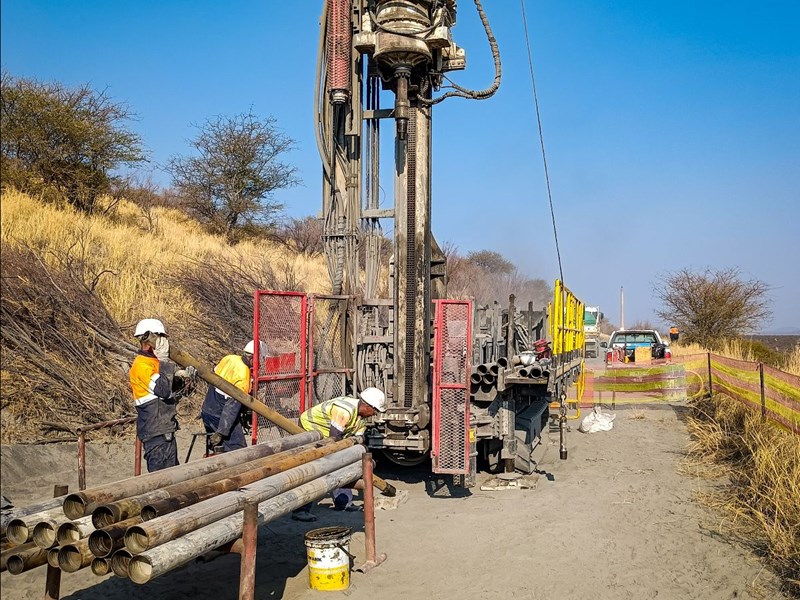Sonic & in-situ testing on tailings

On May 20, 2024, Elijah Mahlangu, GeoGroup Supervisor, and his team embarked on a geotechnical investigation at a Tailings Storage Facility (TSF) in Limpopo Province, South Africa. Contracted by Anglo American, the team was tasked with geotechnical drilling (using Sonic Drilling), Dames and Moore sampling, electronic vane shear testing (eVST), and the installation of ShapeArrays.
The silty, clay-like soil prevalent in some TSFs presented significant challenges. To ensure the safety of the crew and equipment, the Sonic SDC 450 sonic rig had to be tracked over long distances—up to 5 kilometers—to reach specific drill locations. Despite these logistical hurdles, the team successfully completed all sonic drilling positions.
The In-situ testing portion of the project involved both eVST and Dames and Moore sampling. Although both these tests are used to assess the strength and properties of the soil, they both serve different purposes and have their own distinctive methodologies. eVST’s are primarily used to measure the undrained shear strength of cohesive soils using a vane that is inserted into the soil. The vane is then rotated at a constant rate, and the torque measured that is required to overcome the shear resistance of the soil. Dames and Moore sampling is done to obtain undisturbed soil samples for laboratory testing, allowing for a wider range of tests and more detailed analysis. The sample is extracted by pushing a thin-walled tube sampler into the ground, capturing a section of soil. Both of which presented some challenges for the project:
DAMES & MOORE CHALLENGES: The team encountered difficulties during Dames and Moore sampling due to the soil's high shear strength, resulting in low sample recovery. To mitigate this, they increased the waiting period before extraction and extended the test range.
ELECTRONIC VANE SHEAR TESTING CHALLENGES: Testing was also impacted by the challenging tailings formations, which consisted primarily of drained silty materials. The soil's alternating soft and hard layers hindered the accurate targeting of suitable strata. However, the GeoGroup technicians' expertise and quick adaptation allowed them to effectively identify and test the correct layers.
As part of the scope of works, our Terra Monitoring team also successfully installed shape arrays for the client. By utilising their existing Telemetry system, the team seamlessly integrated the new devices into the existing gateway on-site which enabled the new data inputs to report in conjunction with the client's current monitoring platform for near real-time reporting of critical site instrumentation.
The successful completion of this project demonstrates the GeoGroup team's ability to navigate complex geotechnical investigations and instrumentation challenges, and to coordinate with multiple stakeholders to deliver efficient and reliable solutions.

Plot 28 Central Road
Sunrella, Lanseria
Gauteng
South Africa
Tel. +27 (0)11 966 7760
Email. info@geogroup.co.za